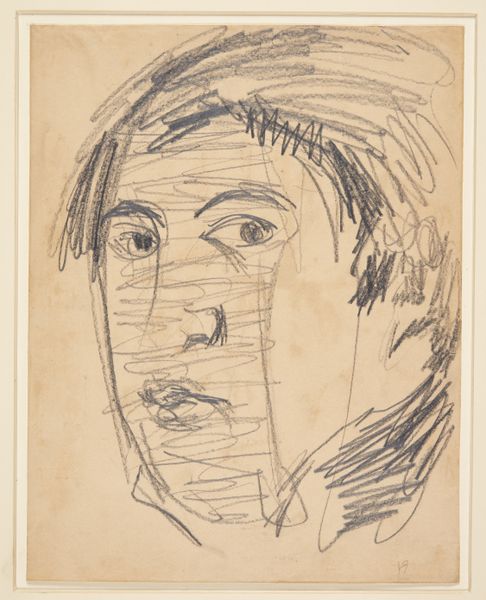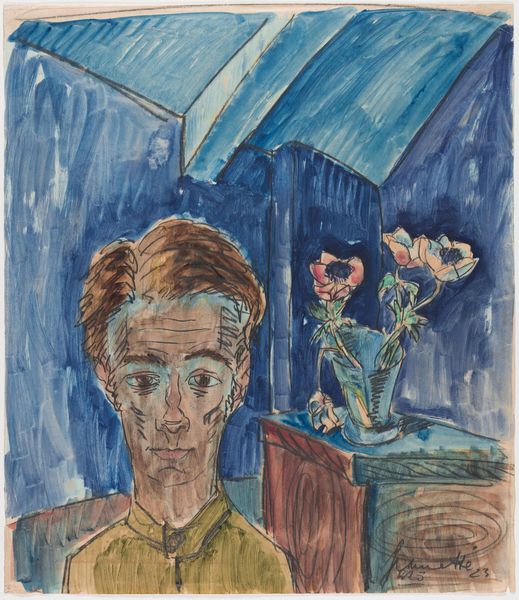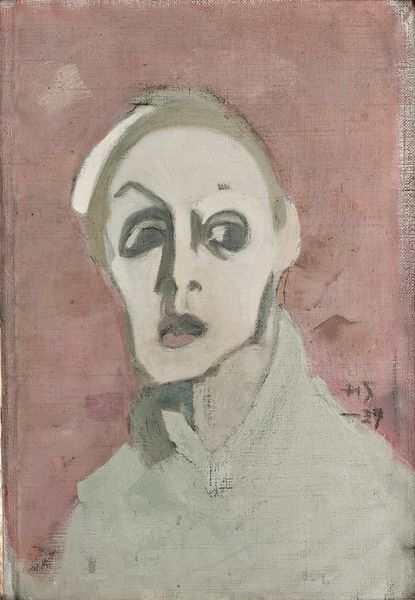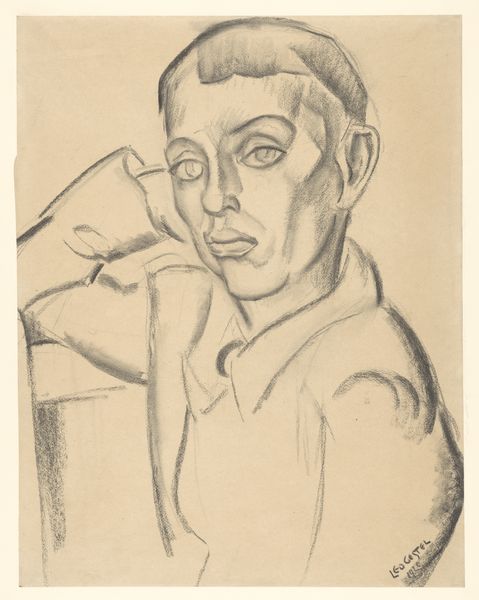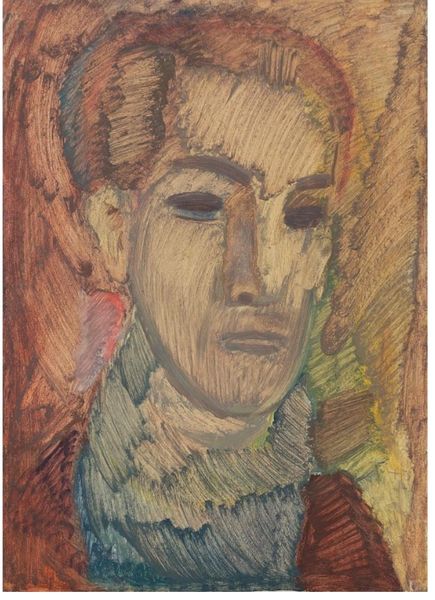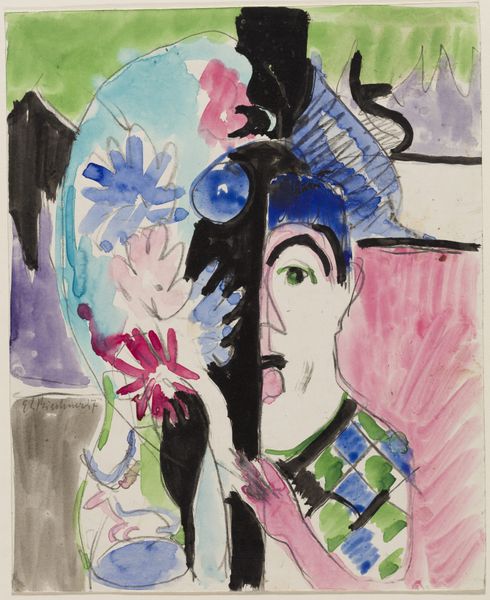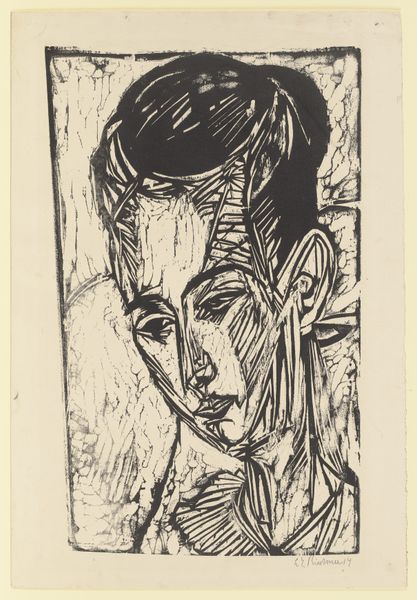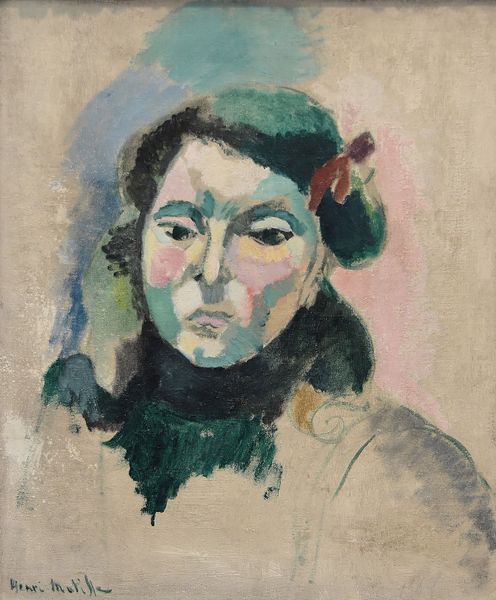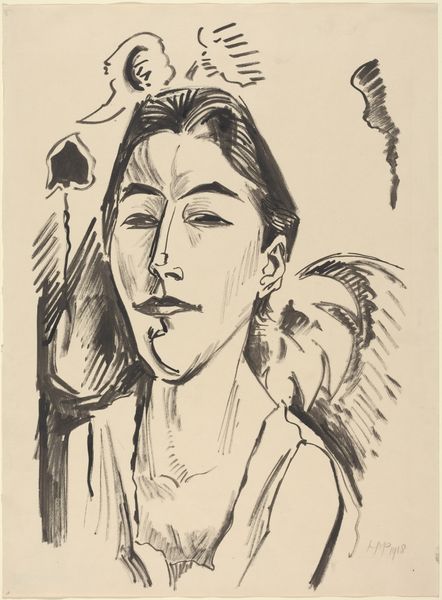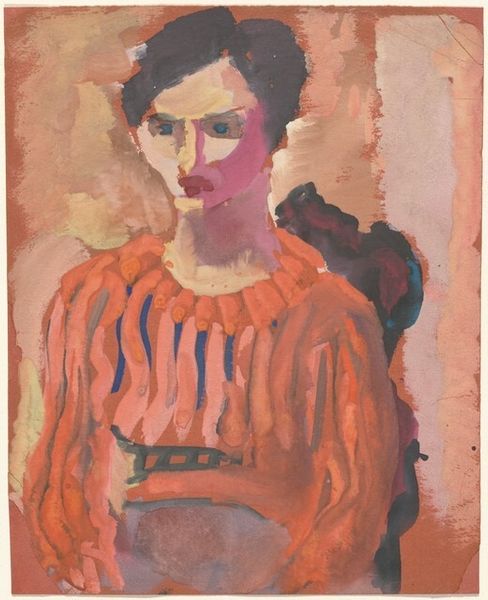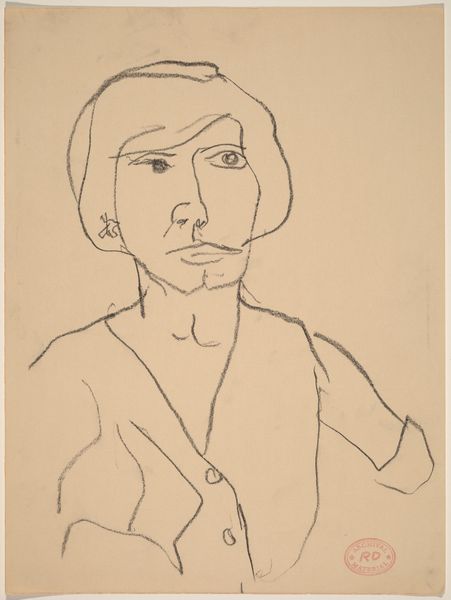
drawing, watercolor
#
portrait
#
drawing
#
self-portrait
#
german-expressionism
#
figuration
#
watercolor
#
expressionism
#
modernism
Dimensions: sheet: 48.5 x 37.5 cm (19 1/8 x 14 3/4 in.)
Copyright: National Gallery of Art: CC0 1.0
Editor: Gramatté's "Self-Portrait in Front of Stairs," painted in 1922, is quite striking. I'm immediately drawn to the unusual use of color on the face – the almost mask-like quality. How do you interpret this work? Curator: The distortion and vibrant coloring of the face definitely place this within the German Expressionist movement, a time of significant social upheaval. Gramatté is not simply creating a likeness; he’s using the portrait to express inner psychological states. Consider the context: Germany in the Weimar Republic, experiencing economic instability and political polarization. Editor: So, the artist might be using the self-portrait to comment on the state of society? Curator: Precisely. The unsettling colors, the stark shadows – are they reflecting personal anxiety, or a broader societal unease? Notice the setting, too – the staircase suggesting upward movement, but also instability. Are the stairs leading to a better future, or are they a metaphor for a society teetering on the edge? The institutional structures were undergoing scrutiny. What do you make of that direct gaze? Editor: It feels challenging, almost confrontational, as if Gramatté is forcing us to acknowledge this discomfort. It does seem more like a social statement than just an intimate self-reflection. Curator: It becomes less about the individual, Walter Gramatté, and more about the role of the artist within a fractured society. Think about the Expressionists' overall goal - to critique bourgeois society. Understanding the painting in the historical context reframes it, don't you agree? Editor: I completely agree. It really shifts my perspective to see the artwork as a reflection of institutional instability and public role of art itself, rather than just as a look into Gramatté's emotions. Curator: Absolutely. Analyzing art with an understanding of social and historical forces at play allows for richer appreciation of artistic intention and effect.
Comments
No comments
Be the first to comment and join the conversation on the ultimate creative platform.
